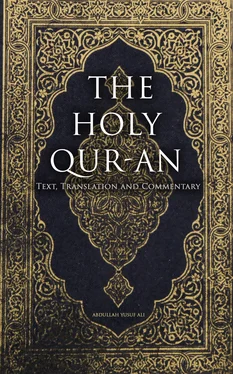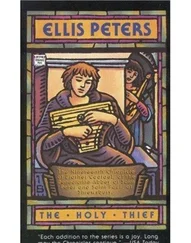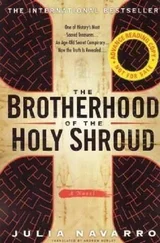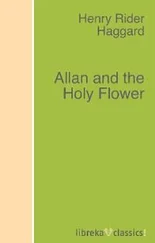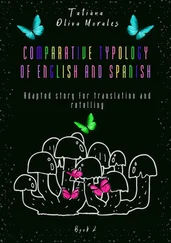Abdullah Ali - The Holy Qur-an - Text, Translation and Commentary
Здесь есть возможность читать онлайн «Abdullah Ali - The Holy Qur-an - Text, Translation and Commentary» — ознакомительный отрывок электронной книги совершенно бесплатно, а после прочтения отрывка купить полную версию. В некоторых случаях можно слушать аудио, скачать через торрент в формате fb2 и присутствует краткое содержание. Жанр: unrecognised, на английском языке. Описание произведения, (предисловие) а так же отзывы посетителей доступны на портале библиотеки ЛибКат.
- Название:The Holy Qur-an: Text, Translation and Commentary
- Автор:
- Жанр:
- Год:неизвестен
- ISBN:нет данных
- Рейтинг книги:5 / 5. Голосов: 1
-
Избранное:Добавить в избранное
- Отзывы:
-
Ваша оценка:
- 100
- 1
- 2
- 3
- 4
- 5
The Holy Qur-an: Text, Translation and Commentary: краткое содержание, описание и аннотация
Предлагаем к чтению аннотацию, описание, краткое содержание или предисловие (зависит от того, что написал сам автор книги «The Holy Qur-an: Text, Translation and Commentary»). Если вы не нашли необходимую информацию о книге — напишите в комментариях, мы постараемся отыскать её.
The Holy Qur-an: Text, Translation and Commentary — читать онлайн ознакомительный отрывок
Ниже представлен текст книги, разбитый по страницам. Система сохранения места последней прочитанной страницы, позволяет с удобством читать онлайн бесплатно книгу «The Holy Qur-an: Text, Translation and Commentary», без необходимости каждый раз заново искать на чём Вы остановились. Поставьте закладку, и сможете в любой момент перейти на страницу, на которой закончили чтение.
Интервал:
Закладка:
S. = Surah.
v. = verse.
vv. = verses.
vis. = videlicet = namely.
1/30, 2/30, etc. = the end of one Sipara, two Siparas, etc. A Sipara is arithmetically the 30th part of the Qur’an.
Punctuation Marks In The Arabic Text
Table of Contents
The punctuation marks in the Arabic Text have been worked out by our ‘Ulama with great care and minute attention to details. The earliest manuscripts had few or no punctuation marks. Their growth and development furnish an interesting history, on which I hope Professor Zafar Iqbal, who gone into the question, will public his notes. In classical Europe, Greek had practically no punctuation marks. Later Latin had one or two rudimentary ones. In modern Europe they developed with printing. Aldus Manutius (16th century) was the first to work out a regular system. The Muslims were much earlier in the field for Quranic purposes, although in current Urdu, Persian, or Arabic, punctuation is not a strong point.
Quranic punctuation is a elaborate system, in which three kinds of marks are used. First, there are marks to show the variations in the system of Qiraat. The most important of these is that is known as the Mu’anaqa معانقة. This literally means the action of two persons embracing each other shoulder to shoulder, as in the ceremonious salute at the celebration of ‘Id. The technical meaning in connection with the Quranic text is that a certain word or expression so marked can construed as going either with the words or expressions preceding it or with those following it. The word or expression in question is indicated by three dots ∴ placed before and after it, above other punctuation marks if any. An example will be found in 2:2, where the word fi-hi may be construed either as referring to the word rabb in the preceding clause, or to the word hudan in the succeeding clause. Either or both constructions are admissible. Passages where such constructions occur are indicated in the margin of the Arabic Text: by the abbreviation مع, where this was worked out by earlier Commentators (Mutaqaddimin), or by the word معانقة in full, where it was worked out by the later Commentators (Mutaakh-khirin). The numeral above it shows the serial number of the Mu’anaqa of each series.
Secondly, there are marginal marks showing division into sections op paraghs. These are denoted by the letter ‘ain (ﻉ) in the margin, and are explained under the heading “Divisions of the Qur’an”.
Thirdly, there are ordinary punctuation marks in the Text. A knowledge of the most important of these is necessary for an intelligent reading of the Text. Most important of all is a big circle ◌ to denote the end of one Ayat and the beginning of another. If the end of the Ayat is not also the end off a sentence, the mark of a smaller stop is put above it. Where one mark is put on the top of another, the former governs the latter. A warning not to stop is denoted by لا. The letter مـ (lazim) shows that a stop is absolutely necessary; otherwise the sense is spoilt. This is so important that it is also shown prominently in the margin as ج .وقف لازم (jaiz) show that a stop is optional, but if you do not stop, the sense is not spoiled. There are other marks to show the extent to which a stop is permissible, e.g., for taking breatk, etc., or where option is allowed, whether it is better to stop or not to stop. The letter ﻃ (mutlaq) denotes a full stop, i.e., the end of a sentence, but not the end of an argument, as in the case of a paragraph or section (ﻉ).
Divisions Of The Qur'an
Table of Contents
The reading of the Qur’an is considered a pious duty by every Muslim and is actually performed in practice by every literate person, man woman, and child. For the convenience of those who wish to complete the whole reading in a given time, the whole Text is divided into thirty equal parts, or seven equal parts. The thirtieth Part is called Sipaha or simply Para in Persian and Urdu. If you read a Sipaha every day, you complete the whole reading in a month of thirty days. The seventh part is called a Manzil. If one is read every day, the whole is completed in a week. Usually the arithmetical quarters of a Sipaha (one-fourth, one-half, three quarters) are also marked in the Arabic copies as Ar-rub’, An-nisf, and Ath-thalatha.
According to subject-matter, the division is different. The whole of the Qur’an is arranged in 114 Surahs of very unequal size. The Surahs are numbered and the consecutive number is shown just before the title of the Surah, both in Arabic and English. In Arabic, the figure just after the title shows the chronological order as usually accepted by Muslims writers. Each Surah consists of a number of Ayats. Surah 1 contains 7 Ayats and Surah 2 contains 286. For the meaning of Surah and Ayat see C. 42 nn. 15-17. The most convenient form of quotation is to name the Surah and the Ayat: thus 2:120 means the 120th Ayat of the second Surah. A Surah is usually spoken of as a Chapter in English, but that translation is hardly satisfactory. If you examine the order you will find that each Surah is a step in a gradation. I have left the word untranslated, as a technical term in our religious literature. The Ayat or verse division is usually determined by the rhythm and cadence in the Arabic Text. Sometimes an Ayat contains many sentences. Sometimes a sentence is divided by a break in an Ayat. But usually there is a pause in meaning at the end of an Ayat.
A division of the Surah into Sections is shown in all Arabic Text. These are logical divisions according to meaning. The word translated “Section” is in Arabic Ruku’ a “bowing of the head.” The end of a Ruku’ is shown in Arabic by [character not included]. Usually three figures are written with ﻉ. The top figure shows the numner of Ruku’s completed in that Surah. The middle figure shows the number of Ayats in the Ruku just completed. The bottom figure shows the number of Ruku’s completed in that Sipara, irrespective of Surahs. For example, the first ﻉ in Sipara 2 which continues Surah 2 from Sipara 1 is usually marked [character not included]. It means that at that point 17 Ruku’s of Surah 2 have been completed, that the Ruku’ of which it marks the close contains 6 Ayats, and that it is the first Ruku’ that falls in Sipara 2. I have further marked the sub-division of Ruku’s into shorter paragraphs where necessary, by using in the English text a bold flowery Initial; e.g. see the initial [Initial not included] in 2:6 or the initial [Initial not included] in 2:35.
بِسْمِ ٱللَّهِ ٱلرَّحْمَٰنِ ٱلرَّحِي
Introduction
Table of Contents
God's purpose with man
C. 1.—Glory to God the Most High, full of Grace and Mercy;
He created All, including Man.
To Man He gave a special place in His Creation.
He honoured man to be His Agent,
And to that end, endued him with understanding,
Purified his affections, and gave him spiritual insight;
So that man should understand Nature,
Understand himself,
And know God through His wondrous Signs,
And glorify Him in truth, reverence, and unity.
C. 2.—For the fulfilment of this great trust
Man was further given a Will,
So that his acts should reflect God’s universal Will and Law,
And his mind, freely choosing,
Should experience the sublime joy
Of being in harmony with the Infinite,
And with the great drama of the world around him,
And with his own spiritual growth.
C. 3.—But, created though he was in the best of moulds,
Man fell from Unity when his Will was warped,
And he chose the path of Discord.
And sorrow and pain, selfishness and degradation,
Читать дальшеИнтервал:
Закладка:
Похожие книги на «The Holy Qur-an: Text, Translation and Commentary»
Представляем Вашему вниманию похожие книги на «The Holy Qur-an: Text, Translation and Commentary» списком для выбора. Мы отобрали схожую по названию и смыслу литературу в надежде предоставить читателям больше вариантов отыскать новые, интересные, ещё непрочитанные произведения.
Обсуждение, отзывы о книге «The Holy Qur-an: Text, Translation and Commentary» и просто собственные мнения читателей. Оставьте ваши комментарии, напишите, что Вы думаете о произведении, его смысле или главных героях. Укажите что конкретно понравилось, а что нет, и почему Вы так считаете.
